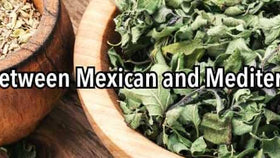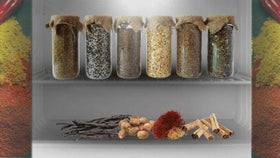What is the Difference Between Vanilla and Gourmet Vanilla?
Sometimes, when we are talking about vanilla, we fail to consider that not everyone is as utterly as obsessed with vanilla beans as our team here at Slofoodgroup. So when we discuss the different grades, species, and regional origins to some folks, they look at us as if we are speaking a foreign language. That’s why this post is meant to clear up any questions revolving around what gourmet vanilla actually is, as well as what it isn’t.
One of those questions is about the difference between vanilla and gourmet vanilla—a question that can’t be answered with a simple “yes” or “no”. You see, vanilla is an overarching term that commonly includes many variations of vanilla flavoring agents: pure extract, imitation extract, powders, pastes, whole beans with varying degrees of flavor concentrations, and being sourced from a multitude of regions and species of beans. Does all gourmet vanilla fall under the vanilla category, yes. Is all vanilla considered gourmet vanilla, no.
Gourmet vanilla is simply a classification of vanilla bean based on that particular beans moisture content and aesthetic appeal. Let’s take a deeper look at the characteristics and uses of gourmet vanilla beans.
What Makes Gourmet Vanilla Different?
There are two main categories of vanilla bean: Grade A and Grade B. When people say, “gourmet vanilla beans”, they are referring to the grade A beans, which are also sometimes called prime or luxury beans. They are categorized as such due to higher moisture levels and pristine appearance.
What is the moisture content and appearance of gourmet vanilla beans and why does it matter?
The gourmet, or grade A, designation of bean allows consumers to quickly interpret the moisture content of the bean. Gourmet beans are graded as such if they have over a 25% moisture level and are free from splits and other imperfections. They appear plump and supple and will likely have an oily sheen about them. Grade B vanilla beans, on the other hand, will fall short of the 25% moisture level. Appearance-wise, the grade B beans will be thin, drier, and more brittle.
Professional chefs typically prefer the gourmet beans, not because of their appearance, but because the seeds are easy to scrape from the bean and the moisture level allows for the flavor to easily infuse into their preparations. Grade B beans also have a n alternative moniker—extract grade—and that is exactly what they are best suited for (making extracts). The low moisture level brings forth that concentrated vanilla flavor that is best experienced when long infusion times are possible. They are also great for making powders and pastes for the same reason.
Do gourmet vanilla beans come from a certain species of plant?
Vining, tropical orchids are responsible for all of the world’s vanilla bean supply. The vanilla orchid originated in rainforests in Mexico and Central and South Americas. Vanilla Planifolia is the most common type of vanilla orchid, but there are two other types that can also be easily sourced: Vanilla Tahitensis, and Vanilla Pompona, both being hybrid species of Planifolia.
Gourmet vanilla beans are not solely produced by any of the three main species. Such a designation has nothing to do with the aromatic or flavor properties, so it has nothing to do with plant they are sourced from, but instead with the moisture content of each individual bean.
Is gourmet vanilla bean extract better?
When it comes to vanilla extract, there is a reason most folks use extract grade beans—with a much lower moisture content, pound-for-pound, they have a much more concentrated flavor. As the beans age and dry out, the pores close off and trap all of that vanilla essence inside the pod. When submerged, that essence is released and vanilla flavor is infused into the chosen carrier liquid.
So, if you are using a vanilla extract made with gourmet vanilla beans, the only major difference is that it probably took more beans to create the same potency of another extract made with less expensive beans.
Ready to experience for yourself why chefs love using gourmet vanilla beans in their cooking? We highly recommend starting out with this variety of Planifolia beans from Madagascar, which boasts a moisture level at around 30-35%.







Slofoodgroup
Author